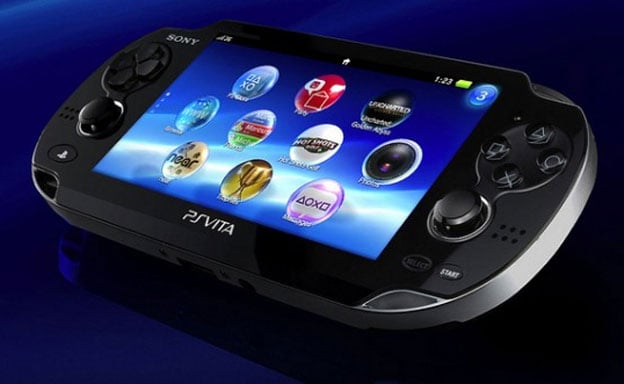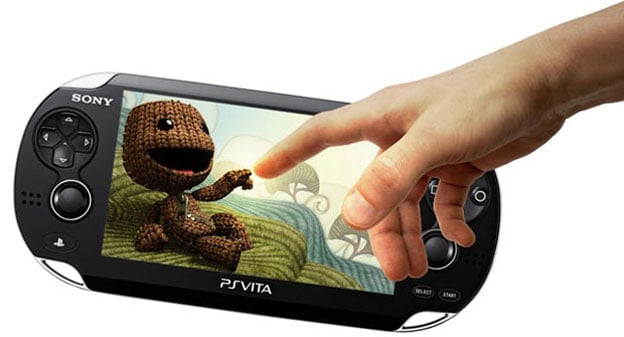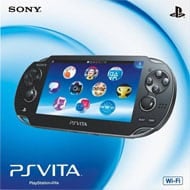More System Than Your Pockets Can Handle
When Sony started teasing the public with pictures of their PlayStaion Vita last year, I must admit, I had a healthy amount of skepticism. Sure, the system itself is extremely attractive, but it felt a bit like I was becoming reacquainted with an unfaithful ex-girlfriend. I mean, the PlayStation Portable was similarly attractive in 2005, and we all remember how that relationship ended.
But once I actually got my hands on the system, one thing became pretty clear: This thing demands respect. Sure, it might look like my old PSP-girlfriend after she’s had a few rounds of elective surgery, but it’s a separate entity altogether. In fact, to say that Sony may have hit the summit of the console gaming market might very well be an understatement. Though, it might also be an unforgivable exaggeration. It really depends on where you draw your lines.

See, The Vita is truly attempting to be everything to everyone. Rather than simply select a control scheme and stick with it, Sony’s design team has adopted an all-encompassing strategy that may very well be a blessing and a curse.
The controls, for instance, utilize nearly every single standard that the gaming industry has conceived of over the past twenty years. It has the gyroscope and accelerometer capabilities of the Wii. It has the augmented reality and geography capabilities of an iPhone. Plus, it mimics the dual analog stick interface of the PlayStation 3 (and/or Xbox 360), and the control pad of the original SNES. In fact, the only interface that the PS Vita hasn’t adopted is the stereoscopic 3D/stylus setup of Nintendo’s 3DS, and I think that most gamers would agree that this is a good thing. Even if you love the 3Ds, there’s probably not room in the market for two Xeroxed specialty systems. So, Sony’s decision to stay away from Nintendo’s milkshake was probably smart.
Controls:
Right out of the box, the controls feel nearly perfect. The analog sticks are bouncy and responsive. And, even though the buttons look like they’ve been shot by a shrink gun when compared to the PSP, gamers will definitely find their rhythm quickly. Plus, those tiny little buttons made me feel a little like a giant, so that was a plus.
However, if I’m being honest, the rear touch panel seems like a bit of a pipe dream if Sony’s looking for it to be used as a serious interface option. Games like Little Deviants manage to find some quirky uses for it, but it has a clumsiness to it that seriously disrupts its usefulness. Though, it took years for developers to figure out how to unakwardly incorporate motion gaming into their console titles, so perhaps I’m being prematurely skeptical.
Aside from the buttons, the system itself will not make you feel like a giant, in fact, quite the opposite. When Sony, released the PSP Go in 2009, it looked like they might be migrating toward a more compact handheld, but the Vita proves that this is not the case. I wouldn’t go so far as to call the Vita “bulky,” but it definitely walks the edge.

Screen:
A fair amount of the Vita’s appeal is wrapped up in its gigantic 5-inch OLED touchscreen. I would even go so far as to say that the screen is the most impressive feature on this little console. Unfortunately, the Vita’s screen is forever destined to be compared to the iPhone’s OLED interface. And, aside from the size difference, Apple’s hardware edges out Sony’s.
The difference is in the pixel density. The iPhone 4’s 3.5-inch OLED screen has a pixel density of 326 ppi, whereas the Vita has a mere 220 ppi. This means that the iPhone packs more of a punch when it comes to color separation and image quality.
However, what the Vita lacks in pixel density, it makes up for in graphical acceleration. Behind that five-inch screen sits the most powerful GPU that has ever attached to a handheld. In fact, it would almost be more appropriate to compare the Vita to the PS3 than it would be to an iPhone or the 3DS.
The difference is instantly distinguishable. Even when I plugged in Little Deviants, a game that doesn’t even come close to hitting the Vita’s graphical ceiling, it had a crispness to it that I would have never expected from a handheld console. And even when viewed from a distance or at overtly awkward angles, the graphics remain crisp and clear.

Software:
I desperately wanted to find something terribly wrong with the Vita’s software interface, but I must admit, I have no genuine complaints. If you’ve operated a smartphone in the last few years, you’re already familiar with the interface. Though, there is a bit of a learning curve.
When you launch an application or a game, you’re transported to Sony’s Live Area UI. Essentially, this is a way to give the users the ability to jump in and out of a game without disrupting their progress. It simply takes a few swipes of your index finger to navigate back to the home screen, where you can check your messages, change settings, etc. Then, when you’re ready to be returned to your game, simply re-launch the title from the Live Area. It’s all pretty slick, but might not be entirely intuitive right out of the box.
Cameras:
Out of all the Vita’s features, the only one that feels truly sub-standard is the camera. It’s essentially useless for everything except the occasional augmented reality title (I’m looking at you, Little Deviants), because the low resolution (640 x 480) makes it far worse than whatever camera-phone you currently have in your pocket. In fact, the only thing that’s more insulting than the Vita’s tacked-on camera is the fact that it has two of them.

Battery:
Aside from the camera, the Vita’s battery is definitely its most disappointing feature. Actually, it might even be more disappointing, because you’ll probably never actually need the camera. According to Sony, the battery should maintain a charge over a 3-5 hour period of playing time, and that was my experience as well. But for a system that leans more toward hardcore gamers than casual, 3-5 hours doesn’t even come close to measuring a hardcore gaming bender. It’s kind of hard to call a system “portable” when you’re tethered to an outlet the entire time.
Conclusion:
Lately, some industry folk have been worried that tablets are starting to elbow their way into the gaming world, and they are probably right. But a rock-solid gaming tablet hasn’t splashed down yet, and there’s a possibility that it never will. The fact is, until we come up with another type of tactile interface, touchscreens just aren’t going to get us the same type of comfortable controls that gamers are used to. So, instead of the “either/or” attitude that most developers seem to have adopted, Sony has implemented both… and more.
The Vita definitely has all of the tools needed to entertain the hardcore gamer, the casual gamer, and everyone in between. But for all of its technical achievements, in a lot of ways the PlayStation Vita feels like one of those pocket knives that are too big to fit in your pocket. The camera is significantly underpowered. The unit itself can feel bulky, and the touchscreen and touchpad often feel slightly unresponsive.
But it’s still far too early to tell if the Vita will suffer the same unfortunate fate as its predecessor, and the outcome of that fate has far more to do with the developers than with the console itself. Sony has given developers an extremely functional pocket knife. Hopefully they can build a few campfires.
RATING OUT OF 5 RATING DESCRIPTION 4.6 Overall Rating – Must Buy
Not an average. See Rating legend below for a final score breakdown.
| Review Rating Legend | |||
|---|---|---|---|
| 0.1 – 1.9 = Avoid | 2.5 – 2.9 = Average | 3.5 – 3.9 = Good | 4.5 – 4.9 = Must Buy |
| 2.0 – 2.4 = Poor | 3.0 – 3.4 = Fair | 4.0 – 4.4 = Great | 5.0 = The Best |
Game Features:
